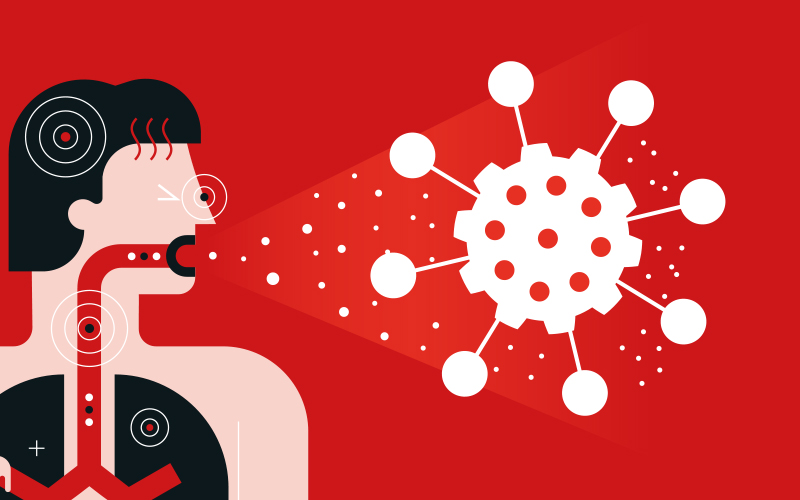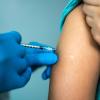This month we ask: “How worried should we still be about COVID-19?”

Mark Cioni

Senior Lecturer in Biomedical Science
Nottingham Trent University
Perception on how worried we need to be about COVID-19 depends on your point of view. On the one hand, the number of cases has dramatically fallen and is currently low. On 3 January 2022, 193,615 cases were reported, with a seven-day average of 166,268 cases per day being seen. The latest data as of 17 January 2023 showed that 1964 cases were reported with a seven-day average of 1776. This is still significantly higher than the level of circulating influenza, which saw 203 samples testing positive for all lineages of influenza virus in the week four National Influenza and COVID Report.
COVID-19 vaccination rates remain high. Of the over 50s and those eligible for an autumn booster, 64.4% were boosted. Higher booster rates are seen in the older age groups, with 82.4% of the over 80s having received their autumn dose.
Whilst still possible, the risk of catching, and becoming ill with COVID-19 is low. However, this must be balanced with the fact that testing has significantly reduced, with lab tests peaking at 701,933 per day on January 2022 and being reduced to 35,825 on 14 January 2023. This can skew data. At the time of writing, 5697 patients were in hospital with COVID-19, leading to 100 deaths daily.
With the almost complete suspension of COVID-19 measures and increased social mixing, it would seem that society’s worries about COVID-19 have disappeared. However, this may be premature.
Adrian Esterman

Chair, Biostatistics and Epidemiology
University of South Australia
If you get infected (or reinfected), chances are you won’t get seriously ill, and the chief concern wouldn be the chance of getting long COVID. Remember, there is a dose–response relationship between the number of times you get infected and your chances of getting long COVID. However, stay home if you have cold or flu-like symptoms, or at least wear a high-quality face mask when out and about to protect others. If you are older and/or have underlying health issues, then you should really take care to protect yourself. Make sure you are fully vaccinated and wear a good-quality face mask when going out.
Be careful around elderly or vulnerable family members. Don’t visit if you are feeling unwell and consider wearing a face mask to protect them. Consider taking a lateral flow test before visiting.
COVID-19 is still causing a lot of sickness. This is putting pressure on our health system, both in terms of services being taken up by COVID patients and health staff off sick with COVID.
We will have better vaccines and antivirals this year. The new subvariants like CH.1.1 and XBB.1.5 are more transmissible than their predecessors, but the wall of immunity built up from vaccination and previous infections should ensure future waves of infection are smaller, and no more severe than previous ones. The only major concern is if a new variant emerges that is more severe than Omicron – let’s hope it doesn’t!
Madihah Abbas

Deputy Service Manager, Special Chemistry
University Hospitals of Leicester NHS Trust
From the beginning of the new year 2023 there has been less emphasis on COVID-19, particularly from the media. Also, only around one in four adults (26%) in Great Britain reported the coronavirus pandemic as an important issue facing the UK today, between 11 and 22 January 2023, according to the Office for National Statistics.
However, I do believe we should still be worried as laboratories and the NHS service are still facing staff sickness absences related to COVID-19, which has increased towards the end of January 2023. This is impacting our ability to process increased workload as services are trying to clear the backlog experienced from the pandemic. From what I have observed, all health service providers, such as GPs and hospitals, are continuing with the mask mandate. Staff are often debating about when this will be dropped as they are not mandatory to wear outside of work within the local community. Some argue there is no justifiable reason why staff are still having to wear them, due to the uncertainty about the effects of the mask. The continued wearing of masks is also a significant barrier to effective verbal and non-verbal communication and could impact sustainability within the environment. However, the most vulnerable patients need to be protected, so I do not envisage use of masks changing. As a profession we should still be cautious surrounding COVID-19 and ensure other measures, such as hand hygiene, are reiterated to modestly reduce the burden of respiratory illness.
Image credit | iStock




